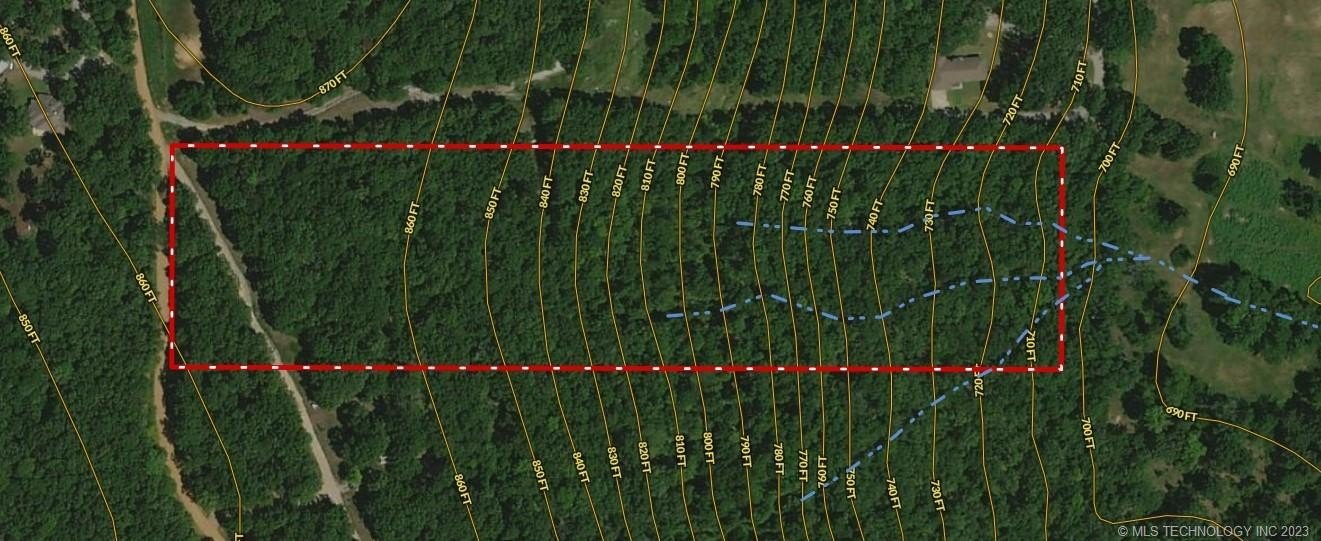Not quite enough information to answer your question. So, I’ll run through to scenario’s; 1) Hook up to city water; 2) Install your own well.
Common to both of them is the question of how much water do you need? For common residential use, 20 GPM at 45 PSI is more than ample. If you are going to do irrigation or livestock watering, that is likely not enough. You will need to decide this. Couple of other items: Do the houses at the top of the hill use city water or do they have their own well, hopefully they would be willing to tell you this. What are the specifications (size and pressure) of the city water line at the bottom of the hill? The local water utility should be able to tell you this, they probably could also tell you if running a line from the main to you house is feasible.
For running a line from the existing main up to the house. From what I can gather, the elevation difference is 150’ (860’-710’). So, you will need to overcome a head difference of 150’ which is roughly 65 PSI. Believe there was mention that the length of the line would be 250’. Line losses (friction) can be significant. Using the 20 GPM figure, the line loss for a 1” Schedule 40 PVC pipe is about 21 ft of water head per 100’ of run. For a 250’ run that would be about 23 PSI. For 2” piping the line loss drops to 0.8 ft per 100 feet of run or 1 PSI. All of these values change if you use a different material, but can be easily recalculated.
To deliver 20 GPM at 40 PSI to the house, using 2” line, the main would need to be capable of delivering that volume at a main line pressure of 65 (elevation head to be overcome) + 1.0 (line loss) + 40 (pressure at entrance to home) = 106 PSI. I doubt that the utility runs the line pressure that high, but it is possible depending on how they designed it. Suspect there would be no issue with the main to deliver the quantity of water you need, but the pressure issue may (likely) be a problem. A booster pump could be installed at the main line, it could be controlled via a standard bladder pressure tank/switch or by the newer variable speed pumps that sense pressure in the line and adjust accordingly. The location and sizing would need additional work as you don’t want to have a negative pressure on the main line. I did ignore line losses from valves/fittings/bends – they can be accounted for later if you go ahead with the design. I’m sure any competent plumber (with the assistance of the water utility) can help you design a system that works – it all does come back to how much water you need and how much you want to spend.
If there is public water at the top of the hill, that may be the way to go. Less elevation difference, and shorter line runs. Far simpler!
If you are going private well the most important factors are depth to water, drawdown volume and water quality. Did a lot of groundwater work in Tulsa (nice town BTW) a number of years ago, unfortunately it was all out on W.22nd. Street near Chandler Park. Was close to the river so groundwater was shallow, abundant – but – quality was highly variable, anywhere from sweet to pretty highly mineralized and occasionally briney. Groundwater quality can vary significantly upon depth and distance. A good place to start on that is a local well driller, they should be able to give you a ballpark idea of what to expect if you are going to put in your own well. As a backup the OK Department of Environmental quality could also give you some idea of what you might find if you drill a well, for a regulatory group, they were good to work with and pretty practical. It is nice to have “free” water with a well, there is that capital cost of installing the well and the associated delivery system. If the quality is good and the depth is reasonable, that may suit your purpose. Not that hard to wire the pump to a standby generator for those times the power is out and the wife wants to flush the toilet!
So, either way works, just a matter of complexity and cost.



